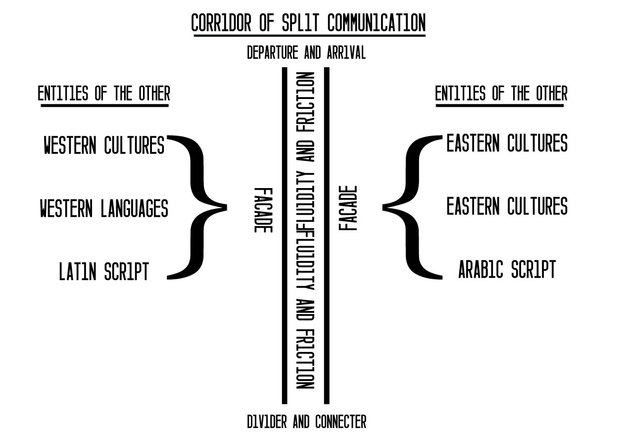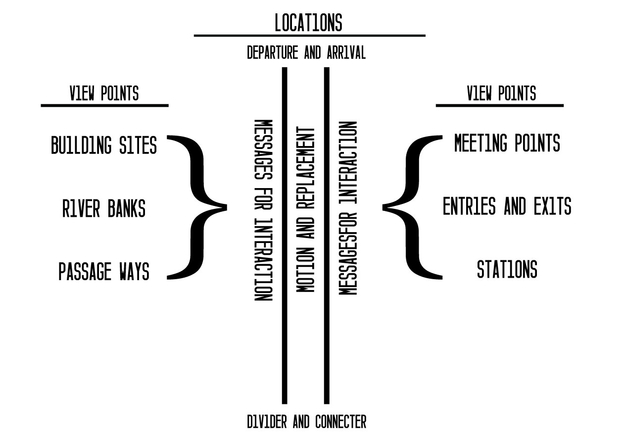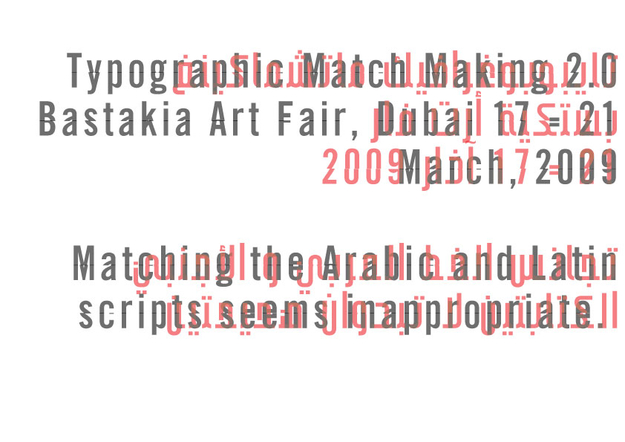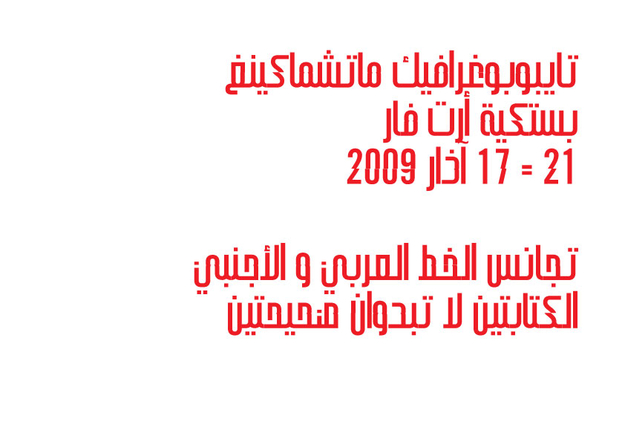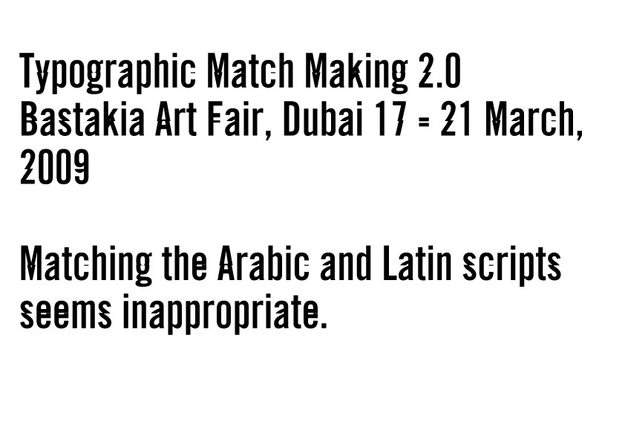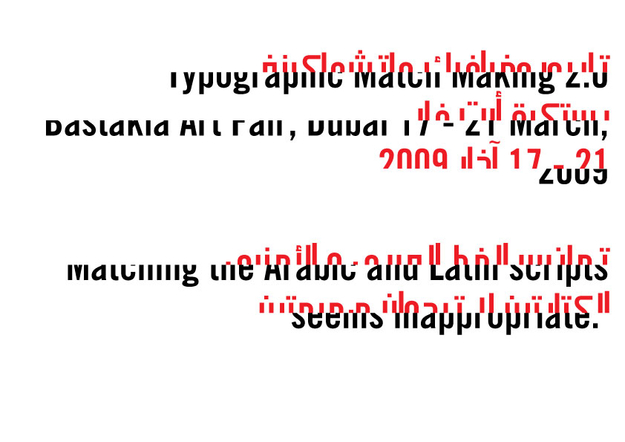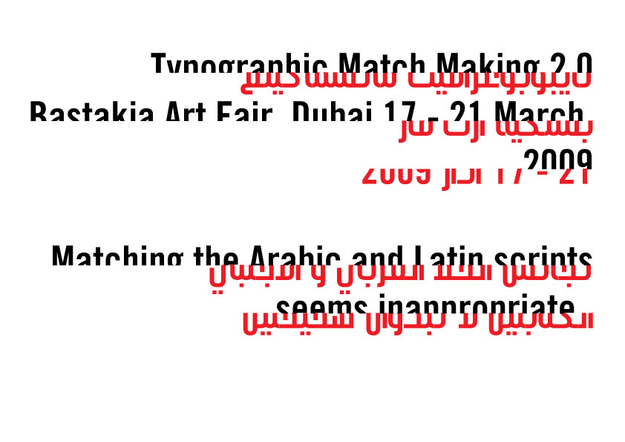Typographic Match Making 2.0
Bastakia Art Center, Dubai 17 – 21 March, 2009
Matching the Arabic and Latin scripts seems inappropriate. They represent two completely different cultures that only can exist next to or intertwine finely with each other, yet never dillute with or replace each other.
The scripts are embedded and primarily used to communicate within their own cultures and communities. That is as far as they reach.
Languages communicate more or less universal human needs, activities and purposes. Through interactions of these activities cultures do connect and overlap. This urges the need for translation in order to synchronise activities. Tranlation enables langages and script to express mutual similar or equal messaging.
Where the cultures connect, geographically or demographically, the different cultures connect as well. Basically different coding systems need to find a common ground to coexist. They can when translated. Yet they can’t replace each other.
The difference between the Arbic and Latin scripts cause that they never synchronise in their writing, recording and reading systems in either length, shape and meaning.
To develop a typographic matching system that represents a coexistence of these two scripts will have to face these limitations. The scripts can touch but they won’t merge.
Letterforms are abstract shapes that carry an attached arbitrary value that could have been anything else. To modify the shape of letterforms, their abstract value will be enhanced. Legibility is based on arranged recognition of these shapes. Recognition is the reference of the values and the key to decode.
In our proposition we will match the two scripts and put them together in a simultaneous use. Messages and texts will be sliced horizontally and onto each half will a script will be attached. One script above and one script below This enables two versions of the texts. Arabic-Latin and Latin-Arabic. By placing texts parralel to each other, the sliced messages will overlap and with the right method they can be attached to be read.
Arabic flows from right to left. Latin flows from left to right.
Two worlds (cultures) approach and touch or overlap
We have 5 points in our strategy:
1. The idea should be practically possible to be realised.
2. The combination of the scripts match in any way, form or sense.
3. They will enable a hybrid coding system, a “new” (split/match) script.
4. The scripts should express their own fluidity, that simultaneous expresses a hybrid fluidity in their incrementing or decrementing.
5. The resulting graphic shapes or hybrid letterforms should balance on or just above the edge of legibility.
Derrived from the concept of the split-flap letterring system (see presentation sheets), we have a few additional thought on its use or adaptation:
The scripts are connected, but separated.
They are abstract, but legible.
They are fluid and flowing.
They are fixed and static.
They interact with the user (writer)
The user (writer) interacts with the reader.
Locations:
On the river (water taxi sun roofs)
At the river banks (one on ech side)
On the inside of souk roofing
On the fencing system
On empty construction sites
Siding passage ways
